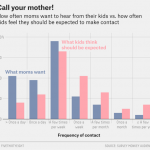The Monsters Inc prequel comes out today, and I’ve been super-dubious about it for a long time. Pixar has broken my heart recently (especially with Brave), and the plot of scrappy underdogs bands together with popular enemy and wins college seemed a lot more cliche than the original story. But then I read this io9 feature on some of the choices the animators made, and now I’m totally enraptured. For example:
“Monsterfication” is the word the design team used to describe the aesthetic of the Monsters University world. Sets art director Robert Kondo explains that the movie’s designers constantly asked themselves, “What would it be like to be a monster architect?” Some of the design challenges in creating the MU campus were practical. For example, since monsters come in all sizes, from Mike Wazowski through the giant football-playing slug creature, how do monster doors work? If you look closely at the campus buildings, you’ll notice doors within doors. There are smaller doors with handles the smaller monsters can reach, framed by larger and larger doors. Even the stairs and drinking fountains are designed for monsters of varying sizes. Plus, flying monsters don’t have to enter some buildings on the ground floor, instead landing on perches outside the top floor windows. Aquatic monsters have their own, submerged portions of campus.
And if you want to be enthused about the process of world and character building, you’ll probably like Eliezer Yudkowsky’s essay “How to Write Deep Characters.”
A good rule of thumb is that to create a 3D character, that person must contain at least two different 2D characters who come into conflict. Contrary to the first thought that crosses your mind, three-dimensional good people are constructed by combining at least two different good people with two different ideals, not by combining a good person and a bad person. Deep sympathetic characters have two sympathetic parts in conflict, not a sympathetic part in conflict with an unsympathetic part. Deep smart characters are created by combining at least two different people who are geniuses.
E.g. HPMOR!Hermione contains both a sensible young girl who tries to keep herself and her friends out of trouble, and a starry-eyed heroine, neither of whom are stupid. (Actually, since HPMOR!Hermione is also the one character who I created as close to her canon self as I could manage – she didn’t *need* upgrading – I should credit this one to J. K. Rowling.)
And if you want to know some of what Yudkowsky knows about writing science fiction and fantasy, you should check out Orson Scott Card’s How to Write Science Fiction and Fantasy. Yudkowsky cites it, and non-author me just had a very enjoyable reread of it on the way to the airport.
In real life, it’s been my privilege to know a great number of enjoyable characters. And one of them is the Secular Students Association Communications Director Jesse Galef. Previously, he sorted his books into the four Hogwarts Houses, and shelved them accordingly, and now, he’s explained why you should precommit to eating any cupcakes you have the ability and desire to eat. His post is a nice, lay introduction to three popular frameworks for decision theory, and his reasoning is too, well, delicious to spoil here.
Over at The American Scholar, there’s an interesting memoir-essay by a survivor of the Burundi civil war, who is baffled and horrified by his American classmates love of first person shooter video games. It’s ultimately an essay about the power of the stories we tell — what gets normalized, how do we make new experiences fit into the arcs and genres we’re accustomed to? But I’m also interested by the way the narrator also reasons by analogy and stories, understanding his new friends by looking for analogues in the cast of characters he grew up with.
Since I was blogging on empathy (the ability to bring others to life in our heads as deep, accurate characters), I have to link to io9’s roundup of empathy research (with a special focus on how we could possibly increase our susceptibility). But some of the findings surprised me:
What Chakrabarti and his colleagues found was that if you were asked whether your best friend should have a candy bar now or $100 next week, you were likely to make a similar choice to the one you’d make for yourself. But if you were trying to decide for a total stranger, especially someone from a different group, you’d be more likely to choose the immediate reward instead of the bigger reward later on. This isn’t just because you want the stranger to be ripped off — it’s because you have less empathy for the stranger, and thus have a harder time imagining the future reward materializing for him or her.
I would have predicted that I’d be more likely to not hyperbolically discount for a stranger, since both rewards were so far removed from me that I could think about both of them as time-independent. Huh.
Oh, and I did manage to sneak a link to a Matilda song in my post on rule-breaking to learn, which is all the excuse I need to stick in my favorite song from that musical (“When I Grow Up”).
http://www.youtube.com/watch?v=e0tRDhEmdO4And finally, I’ll be emailing everyone today who signed up to play in the Ideological Turing Test, to let them know if they’ve been selected. (I want a fair amount of diversity on both teams). While you wait for them to write their essays on sex and death, you may want to check out this historical ideological turing test that Bryan Caplan spotted.
Dawes, Singer, and Lemons (1972)… recruited students who were “hawks” and “doves” with regard to the Vietnam War and asked them to write opinion statements that the typical dove on campus as well as the typical hawk on campus would endorse. Then they recruited a second group of hawks and doves, asked the hawks to agree or disagree with the hawk statements written by hawks and doves, and asked doves to agree or disagree with dove statements written by hawks and doves. Hawks rejected more hawk statements written by doves than hawk statements written by hawks, and doves rejected more dove statements written by hawks than dove statements written by doves. Both hawks and doves rejected statements mostly on the grounds that they were too extreme.
For more Quick Takes, visit Conversion Diary!













